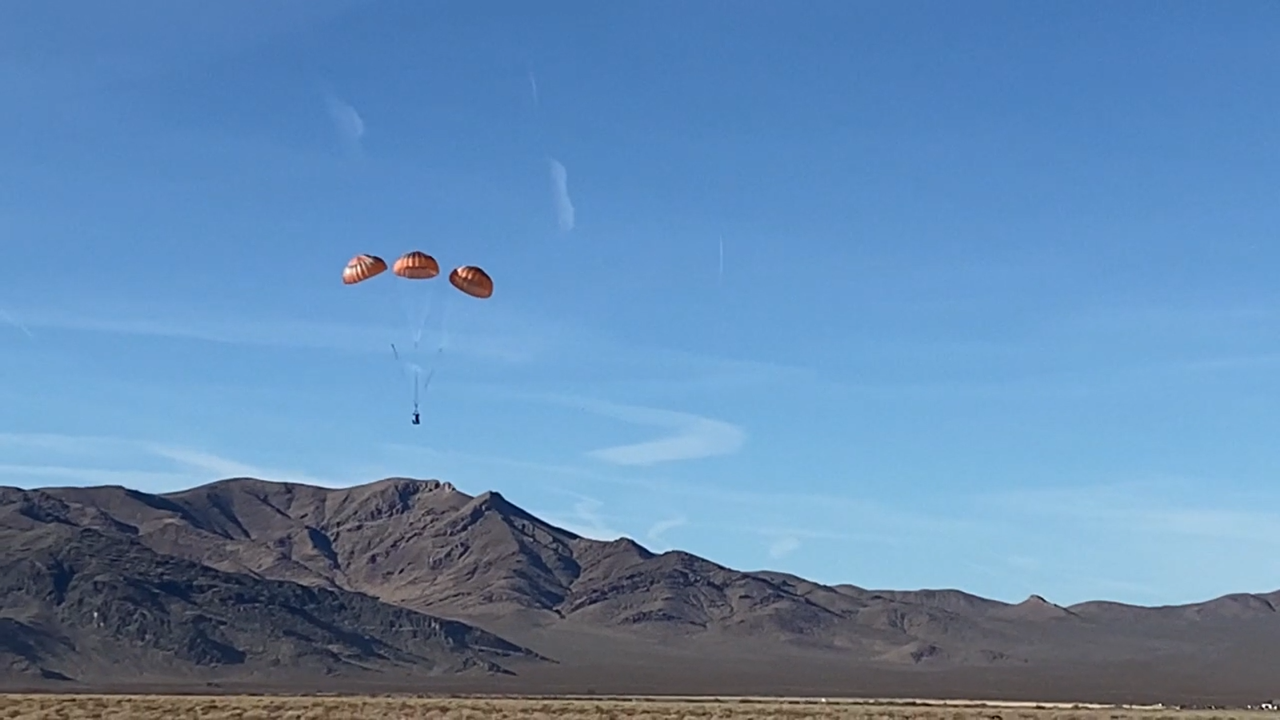
Pioneer Aerospace, an experienced manufacturer of parachutes and aerodynamic deceleration systems for NASA space missions, has been acquired by Aviation Safety Resources, a company developing aircraft recovery parachute systems for the advanced air mobility (AAM) market.
The acquisition of Pioneer from Safran Electronics and Defense will add significant technical expertise, testing capability and manufacturing capacity, said Larry Williams, president and CEO of Kentucky-based Aviation Safety Resources (ASR).
The purchase follows ASR’s acquisition in April 2021 of personnel parachute maker Strong Enterprises, which boosted the company’s defense revenues. “Since we acquired Strong 12 months ago, we’ve doubled our capacity and also doubled our sales. And we anticipate seeing the same kind of result as we take over Pioneer Aerospace,” he said.
With five U.S.-based locations, the rebranded ASR-Pioneer will produce parachutes for aircraft, defense, space and emerging urban and AAM markets—particularly to enable electric vertical takeoff and landing (eVTOL) vehicles to recover safely after power loss at low altitude in the hover.
Founded in 2020, ASR was reorganized in 2018 to address the AAM market, headed by Williams, former CEO of airframe parachute developer BRS Aerospace. “We realized it was time for new technology, that the standard recovery system like on a Cirrus isn’t going to work effectively in vertical flight,” he said.
The challenge was to develop an airframe parachute that would work with no forward airspeed. “We’ve done over 50 test drops and we’ve designed a parachute canopy that will inflate very quickly even with no forward speed, because our goal is to be able to do a recovery within about 100 ft.,” Williams said.
“Right now we’ve got canopies that will inflate and produce a stable descent at about 200-250 ft. So we’re definitely much better than anything that’s out there. For example, a Cirrus in a flat spin takes 920 ft. of altitude loss. We can do it in about 250-300 ft. That has never been done before,” he said.
ASR uses three canopies instead of one large parachute. “To inflate one canopy takes a lot of air and a lot of movement, but for three canopies I can do it faster,” he said. “The addition of Pioneer’s technical expertise and engineering capability we think is going to help us accomplish that ultimate goal of recovering in VTOL.”
More than 80 years old, Pioneer was acquired in 1988 by Zodiac, which in turn was acquired in 2018 by Safran. “There were a couple of downsides to that—they were French owned, in the U.S. defense market, and they were a large business. They couldn’t compete for small business contracts. Those obstacles are being removed,” Williams said.
ASR is to supply the airframe recovery parachute for Bye Aerospace’s eFlyer 2 electric two-seat trainer and is working with the U.S. Air Force’s Agility Prime program to develop an extreme rapid deployment airframe recovery parachute for urban air mobility (UAM) vehicles. “We have six systems qualified now that will work in various environments and different weight classes,” Williams said.
“We’re working on our third Agility Prime contract and are going out to Arizona the week of April 11 to do drop testing of more systems,” he said. “The spillover from that is that, by developing a parachute for eVTOL, we’re able to go back into the traditional aircraft recovery market and offer a system that’s lighter weight, costs less to buy, and has a longer repack cycle than anything else that’s out there.”
The recovery parachute is extracted by a tractor rocket. “That’s been around for decades,” Williams said. “What we have to do is manage the energy in the time frame we have. Getting the parachute out is one thing. The other is the ability to inflate that parachute very, very quickly. We can create loads that will either rip the vehicle apart or blow up the parachute.
“The way we’ve done it is a combination of design features in the parachute to make it open extremely fast but allow enough air to pass through the parachute so it doesn’t create heavy loads and also will produce the rate we want overall,” he said, and with its experience designing parachutes to land rovers on Mars, Pioneer will provide the technology for rapid inflation and managing the energy.
